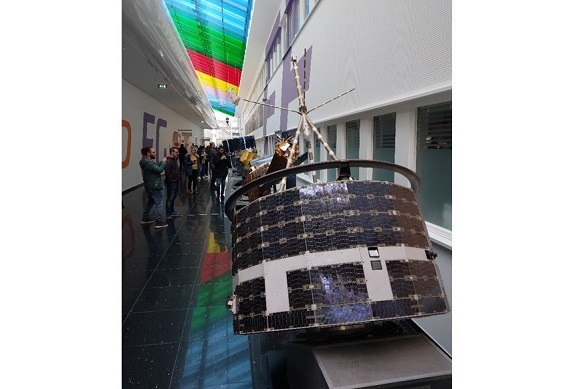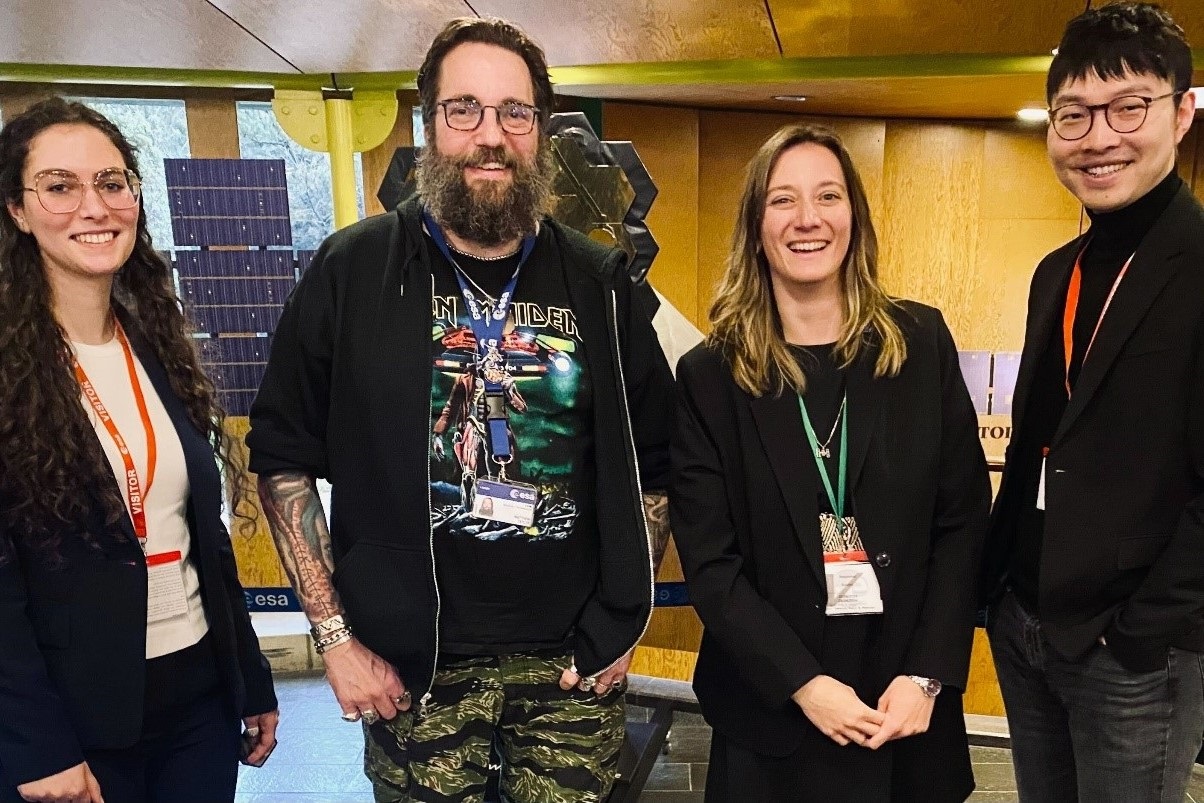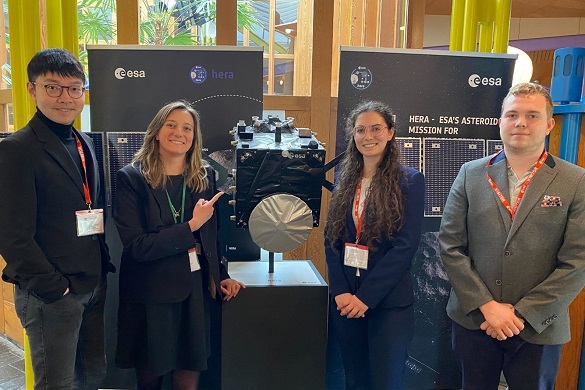Dr Stefania Soldini is a Senior Lecturer (Assoc. Prof) in Space Engineering with the School of Engineering.
She and her team visited the European Space Agency’s European Space Research and Technology Centre (ESTEC) in the Netherlands to attend a workshop ahead of the October launch of Hera, the first European planetary defense mission to the binary asteroid Didymos:
I am astrodynamicist co-Investigator of the science team for the European Space Agency (ESA) Hera mission.
Hera is a planetary defense mission that is scheduled to be launched in October 2024. The mission plans to visit Didymos binary asteroid for measuring the outcome of the NASA’s DART mission kinetic impactor test to deflect the path of an asteroid in space.
I was previously a member of the DART’s science team and worked on predicting the scale of the impact in term of the extra push from ejected asteroid material.
My team visited the ESTEC facility in Noordwijk, the Netherlands, to attend the last Hera community workshop before the mission launch in October 2024.
The workshop was to discuss the latest update in the mission operations of the spacecraft and the development status of the spacecraft which is now in the building and integrating phase.

We had the chance to visit the ESTEC’s laboratories specifically the assembled spacecraft which was particularly exciting. This workshop served to bring together the all science team to discuss coordinate and finalizing the interfaces between the working groups.
It is an exciting mission because the spacecraft will have much more time than DART to really explore the binary asteroid system (Didymos and Dimorphos).
Moreover, the spacecraft will be carrying two CubeSats to enhance the science but also to demonstrate the use of low-cost spacecraft beyond Earth’s application.
The use of microsat for asteroid exploration links to my UKRI funded REMORA project (REndezvous Mission for Orbital Reconstruction of Asteroids: a fleet of self-driven CubeSats for tracking and characterising asteroids) on a new mission concept idea to use low-cost cubesats as a new asteroid tracking system.

As meamber of the dynamics group, I had the chance to present my team research work on NASA’s DART post impact ejecta and what environment we expect to find once the Hera spacecraft gets there.
The Hera workshop has also provided with the opportunity to meet with Liverpool alumnus Dr Matt Taylor during the cocktail dinner at ESTEC. It has been so inspiring for me and my team to meet with Matt and discuss science and mission exploration to small celestial bodies.
Matt is Space Plasma Physicist at ESTEC and his research work focuses on Heliophysics and space plasmas, particularly at the Earth’s magnetosphere. It was great to connect with Matt and discuss possible opportunities for our university students.


